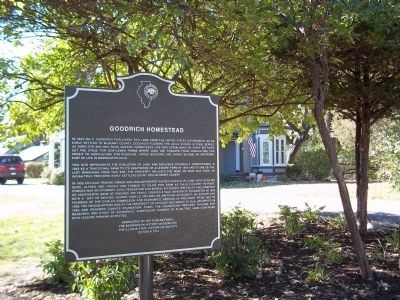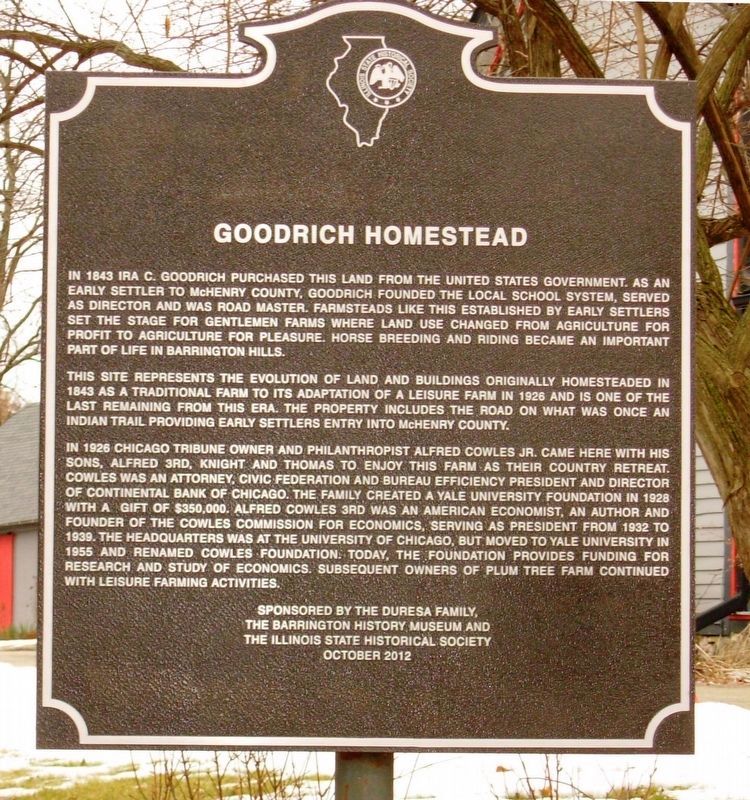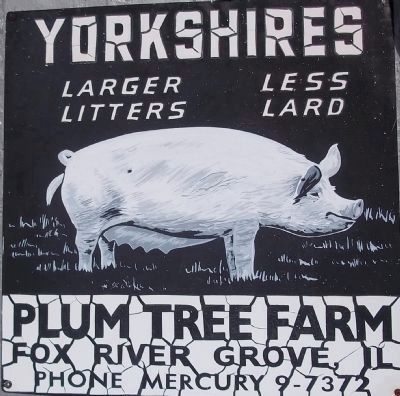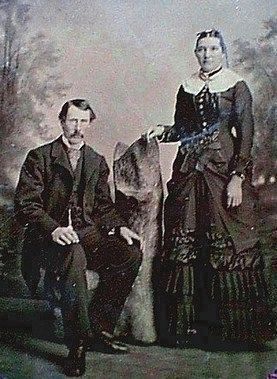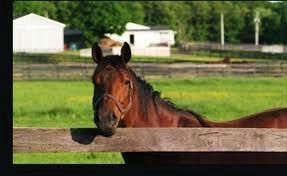Barrington Hills in McHenry County, Illinois — The American Midwest (Great Lakes)
Goodrich Homestead
Inscription.
In 1843 Ira C. Goodrich purchased this land from the United States Government. As an early settler to McHenry County, Goodrich founded the local school system, served as director and was road master. Farmsteads like this established by the early settlers set the stage for gentlemen farms where land use changed from agriculture for profit to agriculture for pleasure. Horse breeding and riding became an important part of life in Barrington Hills.
This site represents the evolution of land and buildings originally homesteaded in 1843 as traditional farm to its adaptation of a leisure farm in 1926 and is one of the last remaining from this era. The property includes the road on what was once an Indian trail providing early settlers entry into McHenry County.
In 1926 Chicago Tribune owner and philanthropist Alfred Cowles Jr. came here with his sons, Alfred 3rd, Knight and Thomas to enjoy this farm as their country retreat. Cowles was an attorney, Civic Federation and Bureau Efficiency president and director of Continental Bank of Chicago. The family created a Yale University foundation in 1928 with a gift of $350,000. Alfred Cowles 3rd was an American economist, an author and founder of the Cowles Commission for Economics, serving as president from 1932 to 1939. The headquarters was at the University of Chicago, but moved to Yale University in 1955 and renamed Cowles Foundation. Today, the foundation provides funding for research and study of economics. Subsequent owners of Plum Tree Farm continued with leisure farming activities.
Erected 2012 by The Duresa Family, the Barrington History Museum,and the Illinois State Historical Society.
Topics and series. This historical marker is listed in this topic list: Agriculture. In addition, it is included in the Illinois State Historical Society series list. A significant historical year for this entry is 1843.
Location. 42° 10.997′ N, 88° 13.087′ W. Marker is in Barrington Hills, Illinois, in McHenry County. Marker is on Plum Tree Road west of Rock Ridge Road, on the left when traveling west. Touch for map. Marker is at or near this postal address: 1001 Plum Tree Road, Barrington IL 60010, United States of America. Touch for directions.
Other nearby markers. At least 8 other markers are within 7 miles of this marker, measured as the crow flies. David Haeger School and Cemetery (approx. one mile away); World War II Memorial (approx. 2.1 miles away); Cary Cemetery - 1839 (approx. 2.1 miles away); Algonquin Village Hall and Public Square (approx. 4 miles away); Dundee Veterans Honor Roll (approx. 6.4 miles away); West Dundee Riverwalk (approx. 6½ miles away); Downtown Crystal Lake (approx. 6½ miles away); Veterans Memorial (approx. 6½ miles away).
Regarding Goodrich Homestead. The original homesteader Ira C. Goodrich came to McHenry County with his father Peter and his bride, Dolly Jane West in 1843. They came to Illinois from New York, leaving behind their famous relative, B. F. Goodrich, the rubber tire creator. Ira was an early pioneer to McHenry County, who formed the local school system, served as its director and was road master, in addition to farming his land.
Other notable owners of Goodrich Homestead / Plum Tree Farm were: Victor and Carlotta Dreiske, who purchased the farm in 1941. They moved from Lake Shore Drive in Chicago, but still maintained their interest and connections with the city. Victor served as president of the Chicago Rotary Club and Chicago’s Mayor Kelly appointed him Director for Chicago Civil Defense. There was a need at that time for a defense plan, because the Soviet Union activated a nuclear testing program. During 1949 Victor developed a fall-out evacuation plan for use if a nuclear war occurred. Victor organized a plan for Chicago and for the surrounding area consisting of a precautionary drill called “Duck & Cover.” This exercise in self-protection was developed for the public and children in grade schools as well.
Another affluent family from Chicago was Kenneth and Rosella (Dolly) Dean (related to the Dean Dairy
Company) purchasing Plum Tree Farm in 1951. They continued the challenge of maintaining a 150-acre gentleman farm, relying on hired help to care for their dairy cattle and breeder pigs. Dolly was known for the special care she gave her baby pigs. In the winter she would run out in her mink coat to feed them. If the winter weather were extremely cold she would bring them into the house. The couple didn’t have children together, so Dolly’s little piglets were her prized possessions.
It was during the Dean ownership that Plum Tree Farm was officially used and written on the farm’s signs, a fitting name for a farm that faced a roadway lined with plum trees. In 1959, the 150 acres was sold and divided into 5-acre estate sized lots, leaving the Goodrich Homestead- Plum Tree Farmhouse and barn complex on a separate parcel of land, as it remains today.
Additional commentary.
1. Barrington Hills First Illinois State Historical Markers
This historical marker was dedicated on the same day as the David Haeger School and Cemetery on Oct. 6, 2012. Both are in Barrington Hills of McHenry County. This is a first for the State of Illinois to have two historical marker dedications on the same day. These historical markers are also the first in the Barrington area.
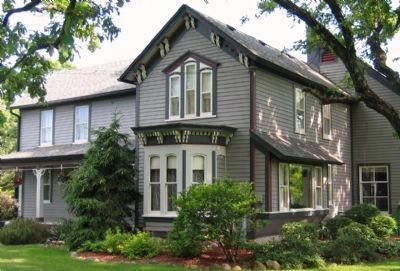
Photographed By Bonnie Duresa
5. Goodrich Homestead Victorian Farmhouse
The farmhouse is a two-story, frame, Italianate style structure, which faces north onto Plum Tree Road, and sits atop the highest point on the land. On the west side of the home a canopy of Burr Oak and Black Locust trees protect it from the summer heat and the winter winds. To the east of the driveway is a gently rolling fenced pasture. One of the last remaining gentleman farms from this era in Barrington Hills.
Credits. This page was last revised on December 5, 2023. It was originally submitted on May 23, 2013, by Bonnie Duresa of Barrington Hills, Illinois. This page has been viewed 1,257 times since then and 44 times this year. Last updated on May 27, 2013, by Bonnie Duresa of Barrington Hills, Illinois. Photos: 1. submitted on May 23, 2013, by Bonnie Duresa of Barrington Hills, Illinois. 2. submitted on November 3, 2023, by Paul Fehrenbach of Germantown, Wisconsin. 3, 4. submitted on May 23, 2013, by Bonnie Duresa of Barrington Hills, Illinois. 5. submitted on May 26, 2013, by Bonnie Duresa of Barrington Hills, Illinois. 6. submitted on May 26, 2013. • Bill Pfingsten was the editor who published this page.
